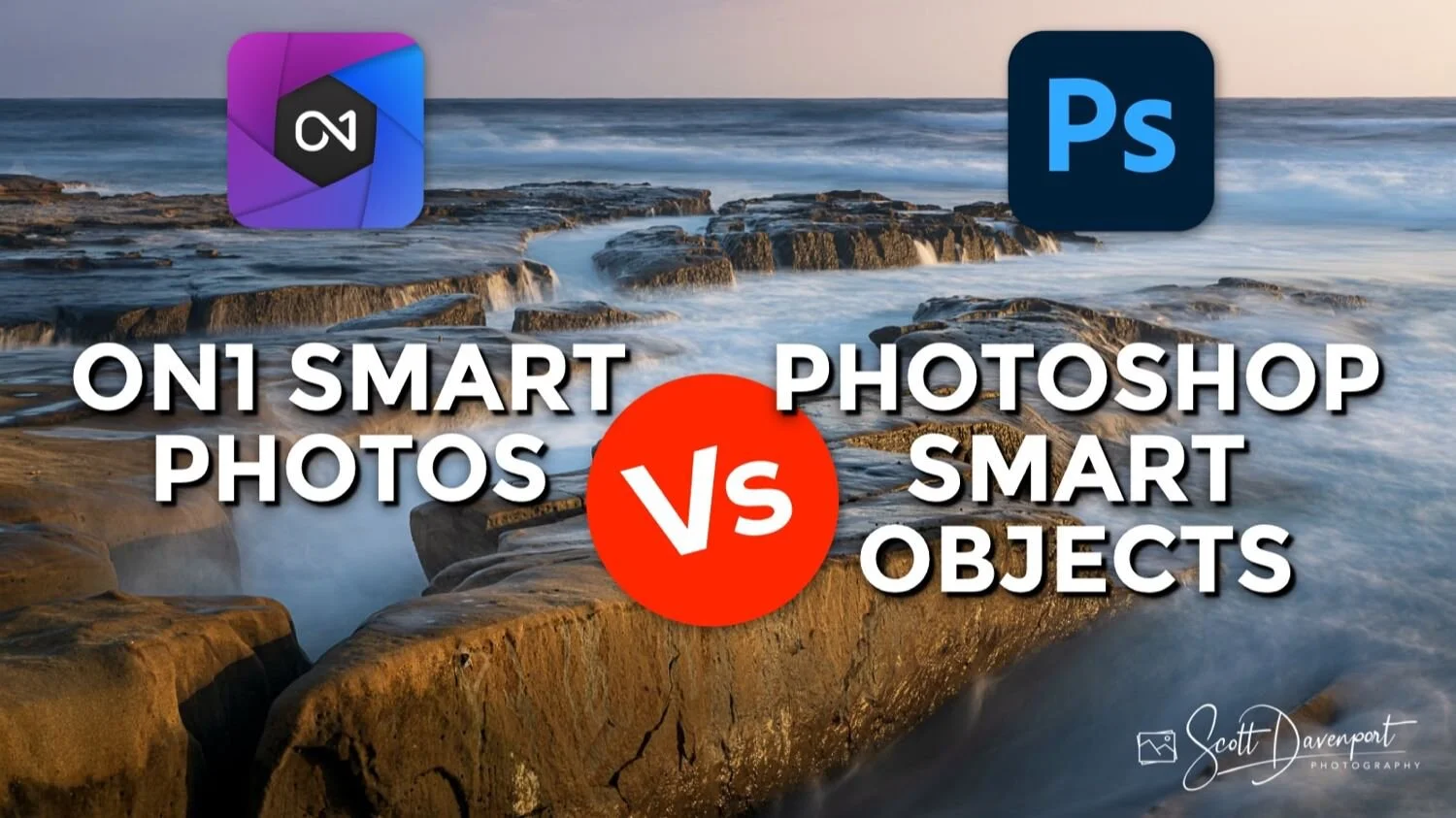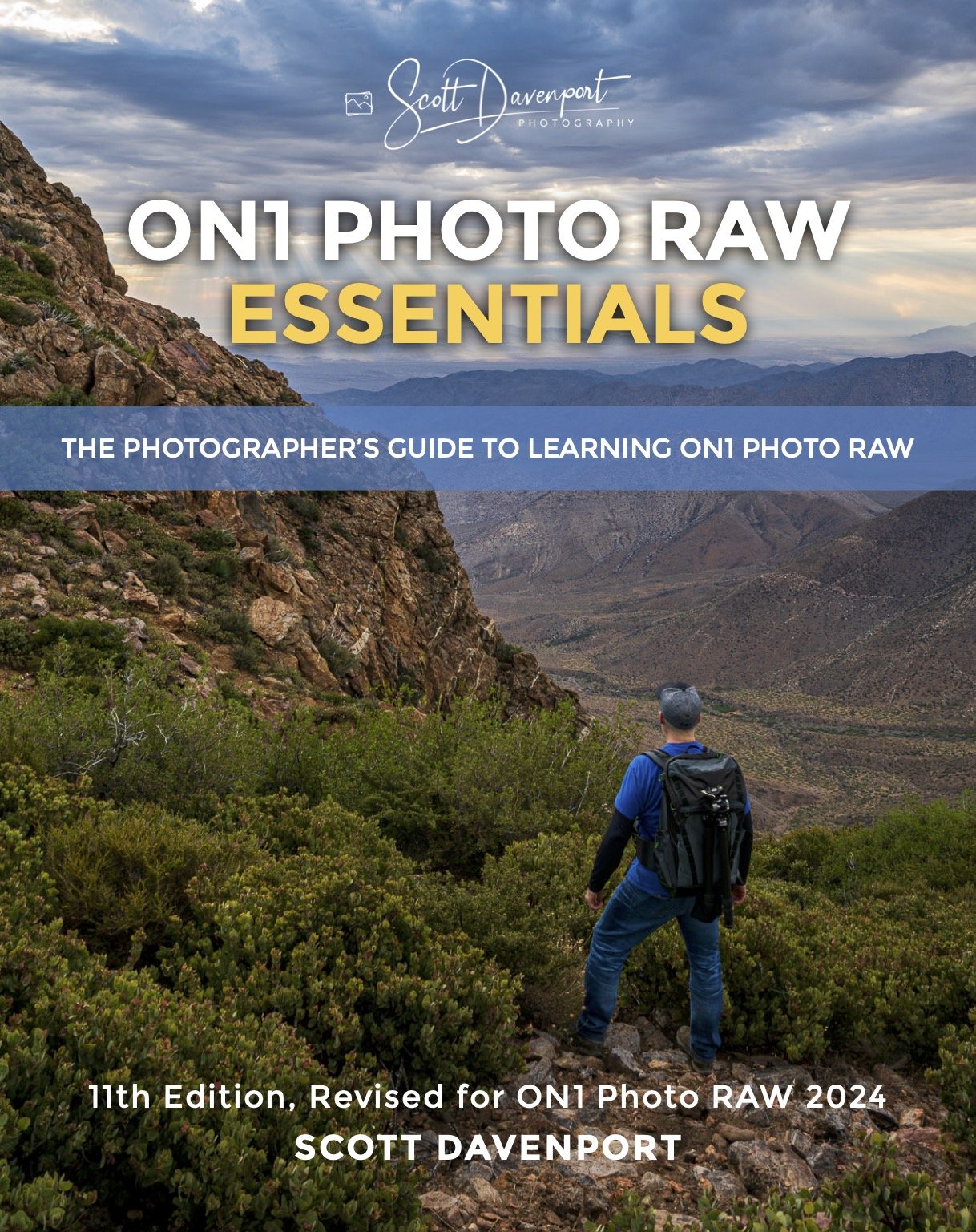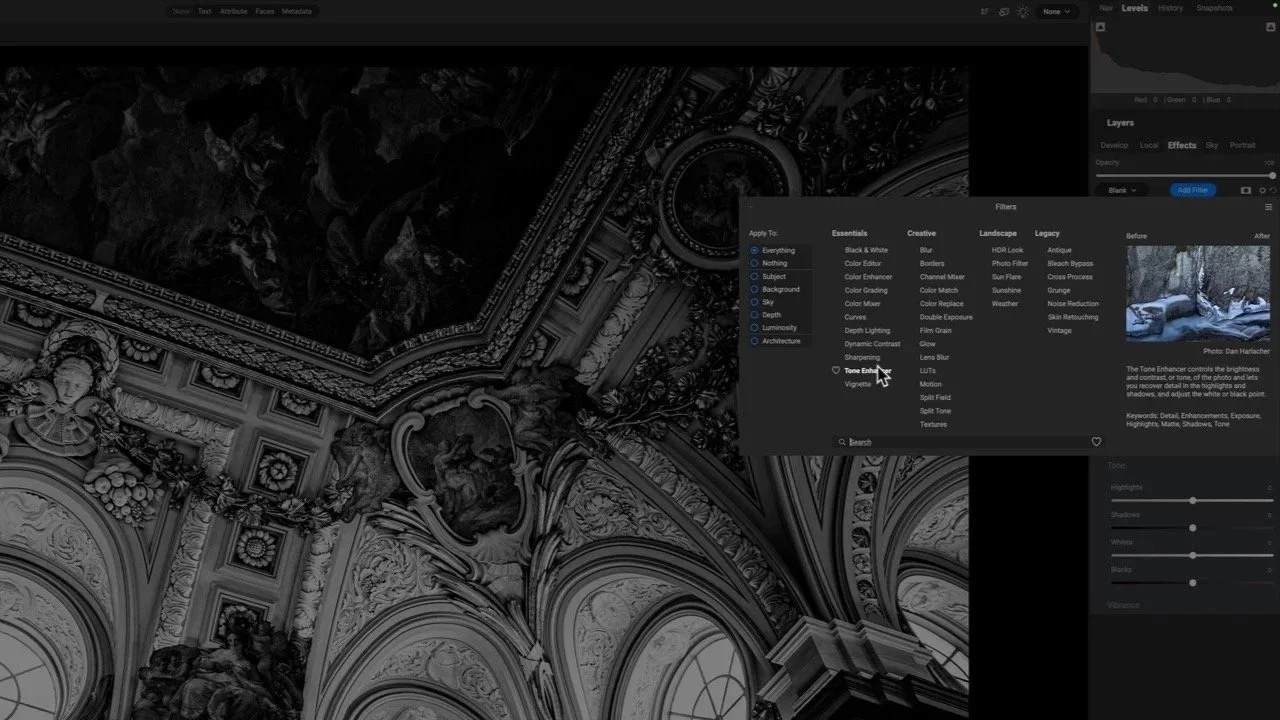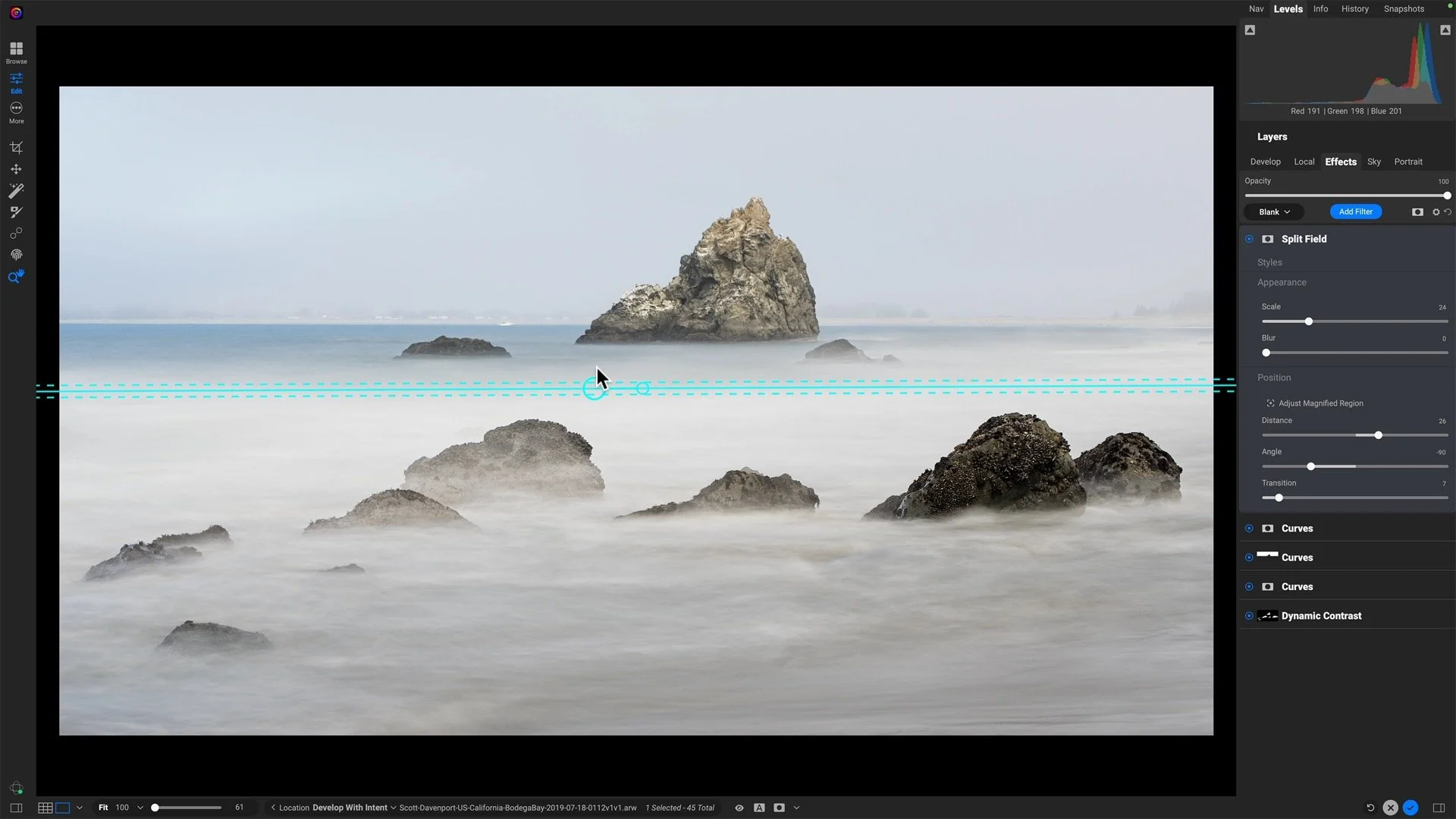ON1 Smart Photos Or Photoshop Smart Objects
If you are trying ON1 Photo RAW 2021, the ON1 plug-ins, or upgrading from an older version, please consider using my affiliate link. There is no extra cost to you and it helps support ON1 tutorials like this one. Ready to buy? Use the offer code SDP20 at checkout and SAVE 20%!
ON1 Smart Photos and Photoshop Smart Objects both provide a non-destructive plug-in workflow from Lightroom. What does that mean? Launching a plug-in from Lightroom is usually a one-time, destructive editing session. Once adjustments are made in the plug-in and you return to Lightroom, you cannot open and re-edit the adjustments made in the plug-in. Smart Photos and Smart Objects change the game.
For Lightroom users that have ON1 plug-ins, which approach should you use? Smart Photos or Smart Objects? What are the pros, cons, and considerations? I’ll detail them for you in this article so you can choose the best approach to suit your unique workflow.
Workflow Overview
Let’s first summarize the two workflows. Both workflows begin in Lightroom with your basic RAW processing. The differences start when you launch the plug-ins.
File > Plugin Extras > ON1 Effects/Portrait and choose the Smart Photos format
Make adjustments in ON1
Save and return to Lightroom
Photo > Edit In > Open as Smart Object In Photoshop
In Photoshop… Choose Filter > ON1 > ON1 Effects/Portrait
Make adjustments in ON1
Save and return to Photoshop
In Photoshop… save and return to Lightroom
The Smart Objects workflow is a little more complex, although for certain scenarios may offer more flexibility. More details on that later. Also, click the links above for a more detailed videos showing each workflow.
Image Quality
No matter how easy a workflow is, if the image quality is not good, it is inherently less attractive. I tested both workflows using the same Lightroom and ON1 Effects settings, looking for any differences in image quality. I did not find any image quality differences across the workflows. In both cases, colors, tones, and details all looked identical. And that’s what I’d expect. The adjustments and pixel manipulation is the same in both tools. How one moves from one tool to another shouldn’t matter.
Note: When launching ON1 directly as a plug-in, I chose the ProPhoto RGB color space. This is the same color space that Lightroom uses internally.
Lightroom to ON1 Smart Photo workflow
Lightroom to Photoshop Smart Object workflow
File Types and Sizes
The Smart Object workflow through Photoshop creates a TIFF file and the Smart Object workflow direct to ON1 creates a PSD file. Where things got interesting is with the file sizes. The Smart Photo PSD is generally smaller than the Smart Object TIFF, and sometimes significantly smaller. In the example on this page, the Smart Photo is 310MB while the Smart Object TIFF is 988MB, more than triple the size of the Smart Photo.
For file size, using ON1 Smart Photos is the clear winner. If storage space is a premium, and ON1 plug-ins are the only ones you will use in an editing session, the workflow choice is simple.
Yet … there may be a catch. There always is one, right? If you’re a Lightroom keyword user … read on.
Smart Object file sizes are generally larger, sometimes significantly larger.
ON1 Smart Photo file sizes are larger than RAW images, yet generally more compact than Smart Objects.
Lightroom Keyword Considerations
When Lightroom sends a photo to a plug-in, it exports the photo to the new file format. For a Smart Photo, that’s a PSD format. If you use keywords in Lightroom, an export process embeds the keywords in the output file. A plug-in workflow is no different - the keywords are added to the PSD. If you use hierarchical keywords, parent keywords are included in the export. If you use Lightroom’s keyword synonym option, the synonyms you have defined are also included in the export. All of these keywords are added as a flat list to the exported file.
Normally, this is all great news for keywords. A few keywords added in Lightroom can be expanded to a larger set during export. For example, the photo on this page was taken at the ocean in La Jolla, California. In my Lightroom catalog, I have a keyword hierarchy of Place > North America > United States > California > San Diego > La Jolla. When I add the ‘La Jolla’ keyword to my image, on export I get everything else above it (San Diego, California, etc.). I also use keyword synonyms, often for multiple languages. I have the keyword Ocean and have defined a synonym Mar (sea in Spanish). In Lightroom, I tag my photos with Ocean and on export the synonym Mar is included automatically.
Where keywords get dicey with Smart Photos is because of the export. The export expands all keyword hierarchies and includes synonyms and puts them in the Smart Photo PSD as a flat list of keywords. When the PSD returns to Lightroom, the flat list of keywords is added to the Lightroom keyword hierarchy. See the example screenshot and notice all of the items in the Keyword List area with check marks next to them. These came from the PSD file. Elsewhere in my keywords hierarchy (not shown) the same keywords exist. The Smart Photo workflow “taints” my carefully curated keyword list.
Hierarchical keywords are expanded using an ON1 Smart Object workflow. This is a result of the exported file Lightroom creates when using File > Plugin Extras.
I want to be very clear about one thing. This is not a problem with the Smart Photo PSD format itself or something ON1 is doing incorrectly with its plugin. This is just how Lightroom works with plug-ins and the File > Plugin Extras menu choice. This problem does not exist with Photoshop Smart Objects. I presume this is because of tighter integration Adobe has between Lightroom and Photoshop.
Is there a workaround? There is, although it’s a pure hack. Before sending a photo to ON1 as a Smart Photo PSD, temporarily remove the keywords from the photo. A simple select all and Edit > Cut to stash the keywords in the clipboard is enough. The issue is remembering to do it. I don’t always remember, and I end up with some keyword cleanup on my hands. If I don’t reorganize and normalize my keywords, I lose out on the benefits of hierarchies and synonyms over time. The next time I apply the ‘La Jolla’ keyword, I might apply the one that’s disassociated from my heirarchy.
Other Considerations
Here are a few other things to consider when choosing between an ON1 Smart Photo and a Photoshop Smart Object.
Camera RAW Re-edits: Using a Smart Object enables re-editing of the fundamental edits done in Lightroom using Camera RAW in Photoshop. For example, if a tweak to the Shadows slider in the Basic panel needs to be made after entering Photoshop, you have that capability. A Smart Photo PSD workflow bakes the Lightroom adjustments into the PSD file when the PSD is prepared for the ON1 plugin.
Multiple Plugins: If you use multiple plug-ins and expect to edit an image using several plug-ins, Smart Objects have an advantage. Many Lightroom plug-ins also work with Photoshop and support Smart Objects. You can use Photoshop as a “plug-in hub” and make non-destructive edits in, for example, ON1 and Luminar, in the same TIFF file. At a later time, you can re-open that TIFF in Photoshop and re-edit the settings you made in the plug-ins.
Compute Power: A Smart Object workflow means at some point you will have 3 photo applications open at the same time. Lightroom, Photoshop, and ON1. If you have an older computer or one that’s smaller stature in terms of processor power or memory capacity, the workflow may be sluggish. Best bet is to give it a try and see how it goes.
Conclusion
I hope this article gives you the info you need to choose the best format for your workflow. The good news is that either choice delivers great image quality. If all you use in ON1 plug-ins and don’t care about (or don't use) Lightroom keywords, then Smart Photos is a great choice. You may as well save the storage space. For multi-plugin users or photographers with a strong reliance on keywords, Smart Objects may be the smoother workflow, albeit at a potentially significant storage cost.
Cairn At Hospitals Reef, La Jolla, California
Contact Scott to commission a print or license this image.













